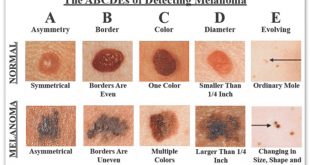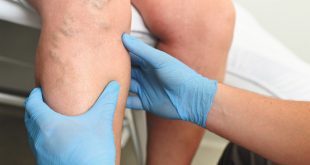By Dr. Puja Kathrotiya
 There are a number of different types of skin cancer, however, melanoma is the most harmful of them all. Every hour a person dies of melanoma; this year alone, over 130, 000 new cases will be diagnosed. Preventative measures and early detection are key. On average, skin cancer screenings take about fifteen minutes. These few minutes of your time could potentially save your life.
There are a number of different types of skin cancer, however, melanoma is the most harmful of them all. Every hour a person dies of melanoma; this year alone, over 130, 000 new cases will be diagnosed. Preventative measures and early detection are key. On average, skin cancer screenings take about fifteen minutes. These few minutes of your time could potentially save your life.
Along with melanoma, your dermatologist can detect and diagnose a number of other disorders. A thorough skin cancer screening and examination is able to diagnose up to 3,000 different skin conditions. Screening should be scheduled annually. However, some types of skin cancer grow rapidly. If you notice new lesions, bumps, or moles, schedule a visit with a dermatologist immediately.
Visual changes should never be ignored. Moles or freckles that have changed in color (halo effect), border irregularity with a diameter greater than six mm, any asymmetry, and evolving or ongoing changes, are all signs that require attention.
Because early detection aids in successful treatment, continual emphasis on the importance of regular skin screenings are critical to your health. Preventative measures, like limiting skin exposure to the sun and applying sun screen while outdoors continue to be effective strategies for maintaining healthy skin.
Wearing protective clothing, like light-weight, long-sleeved shirts and broad-rim hats are great ways to protect your skin from damaging rays that cause skin cancer.
When you are out enjoying the sun, apply a broad-spectrum sunscreen, which protects against UVA & UVB rays. It’s also important to reapply sunscreen at least every 30 minutes, depending on formula strength. Avoiding the sun between 10:00 a.m. and 3:00 p.m., peak times, decreases the risk of over-exposure and skin cancer.
The symptoms to look for in moles or lesions are outlined in this simple acronym, ABCDE:
A—Asymmetry
B—Border Irregularity
C—Color-Variegated or a Halo Effect
D—Diameter (>6 mm)
E—Evolving
In Addition to the symptoms above, there are supplementary signs to look for, which include:
A—Amelanotic (Pink or Red Lesion)
B—Bleeding/Bump (Raised Lesion)
C—Color Uniformity
D—De Novo Development
(A New Development <6mm)
Wearing SPF Every Day
A commitment to wearing SPF is incredibly important. The reason we hear so much advice on wearing sunscreen, sunglasses, and avoiding over sun exposure between 10:00 am to 4:00 pm, is due in large part to the sun’s harmful UV rays during the time when the sun is the highest in the sky. But just because it’s darker, cloudier, and cooler, doesn’t mean it’s any safer. Reapplying sunscreen every two hours is recommended, and even though you might be inside or driving in your car, UV rays can penetrate glass windows, so be sure you are well protected.
If you find something suspicious, you should go to your primary care provider. If the provider is uncertain what it is, it should be biopsied to be sure.
MidState Skin Institute Services
Medical Dermatology
The science of treating the skin, hair, and nails to relieve or cure skin disorders.
Surgical Dermatology
The practice of dermatology that specializes in surgical procedures & minimally invasive
techniques to treat skin cancer.
Cosmetic Dermatology
The practice of improving the look and health of one’s skin through medical or surgical procedures, to help patients look and feel their best.
Aesthetics
Treatment for the skin, hair or body that is meant to enhance the appearance of patients through minimally invasive techniques & personalized topical skin care recommendations.
 Central Florida Health and Wellness Magazine Health and Wellness Articles of the Villages
Central Florida Health and Wellness Magazine Health and Wellness Articles of the Villages



